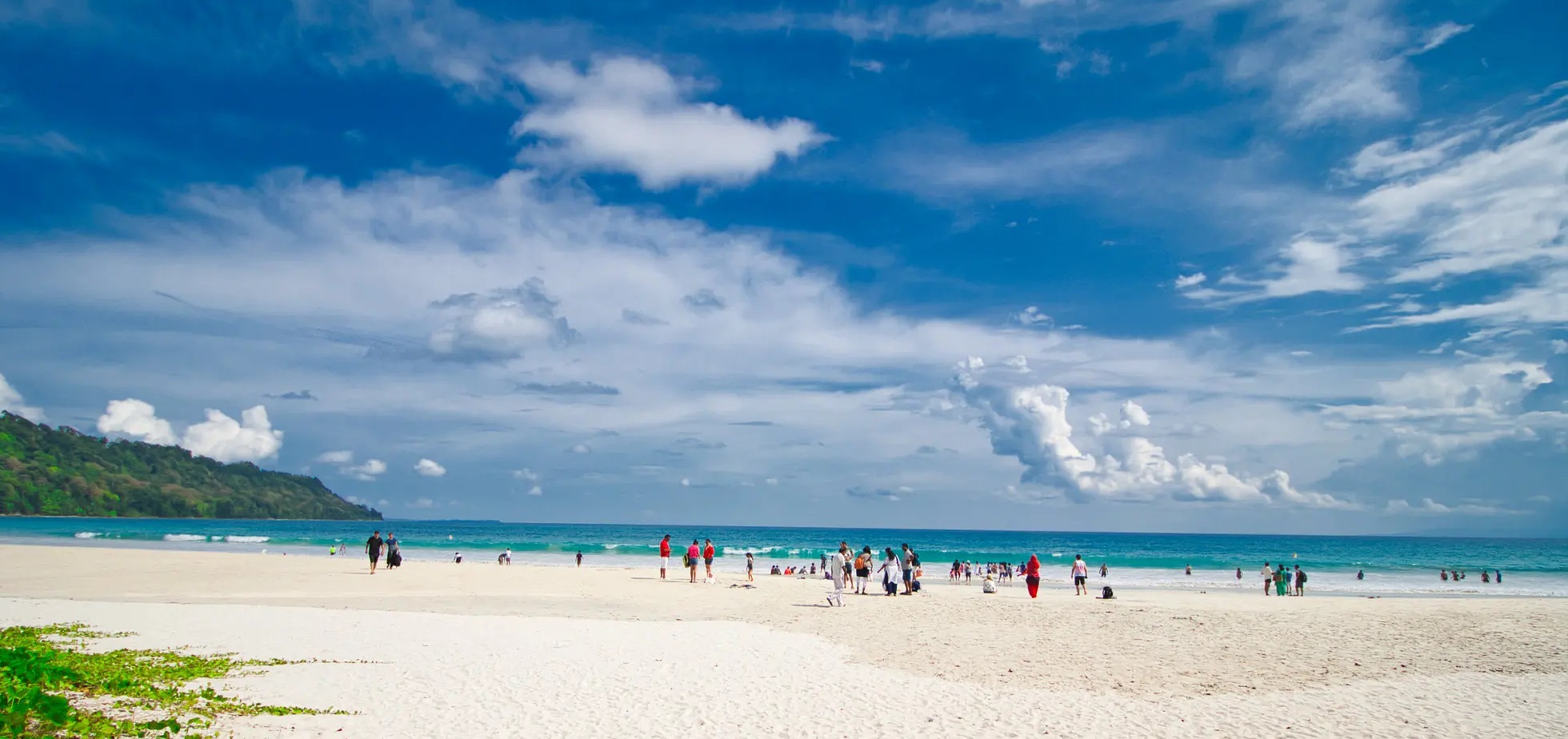Andaman and Nicobar Islands: India’s Emerald Archipelago
The Andaman and Nicobar Islands, an Indian Union Territory, form an enchanting archipelago in the Bay of Bengal. Comprising around 572 islands, only 37 of which are inhabited, this remote paradise is renowned for its stunning beaches, lush tropical forests, vibrant marine life, and unique cultural heritage. These islands offer an unspoiled environment that is perfect for nature lovers, adventurers, and those seeking tranquility away from the mainland’s hustle and bustle.
A Land Emerged from the Sea: A Geological Marvel
The Andaman and Nicobar Islands owe their existence to a fascinating geological story. Millions of years ago, volcanic activity and tectonic plate movements resulted in the emergence of an underwater mountain range. Over time, erosion and coral reef growth shaped these submerged peaks into the islands we see today. The archipelago is broadly divided into two distinct groups: the Andaman Islands to the north and the Nicobar Islands to the south, separated by the vast expanse of the Ten Degree Channel.
A Land Emerged from the Sea: A Geological Marvel
The Andaman and Nicobar Islands owe their existence to a fascinating geological story. Millions of years ago, volcanic activity and tectonic plate movements resulted in the emergence of an underwater mountain range. Over time, erosion and coral reef growth shaped these submerged peaks into the islands we see today. The archipelago is broadly divided into two distinct groups: the Andaman Islands to the north and the Nicobar Islands to the south, separated by the vast expanse of the Ten Degree Channel.
Echoes from the Past: Unveiling a Hidden History
The Andaman and Nicobar Islands boast a rich history shrouded in mystery. Archaeological evidence suggests inhabitation by indigenous tribes dating back over 2,000 years. The enigmatic Sentinelese people, who continue to live in relative isolation, are a constant reminder of the islands’ ancient past.
European explorers like Marco Polo and Marco Polo mentioned the islands in their writings. However, the recorded history begins with the arrival of the British in the 18th century. The islands served as a penal colony for exiled Indians during the British Raj, leaving a mark on the cultural fabric of the region.
A Tapestry of Cultures: A Vibrant Blend
The Andaman and Nicobar Islands are a melting pot of cultures, reflecting the diverse influences that have shaped the region. The indigenous Andamanese tribes, the Jarawa, Onge, Sentinelese, and Shompen, possess unique languages, traditions, and a deep connection to the natural world.
Settlers from mainland India, particularly Tamils, Bengalis, and Malayalis, have enriched the cultural landscape with their languages, cuisines, and artistic expressions. The Nicobarese people, inhabiting the southern islands, have a distinct cultural identity with Malayo-Polynesian roots, evident in their language, social structure, and traditional practices.
A Haven for Nature Lovers: Unveiling the Enchantment
The Andaman and Nicobar Islands are a paradise for nature enthusiasts. Lush rainforests teeming with exotic flora and fauna cover a significant portion of the landmass. From towering mangrove forests to pristine beaches fringed with swaying palm trees, the islands offer a diverse array of ecosystems to explore.
Havelock Island, nicknamed “Swaraj Dweep,” boasts pristine beaches like Radhanagar Beach, consistently ranked among the world’s best. Neil Island, known for its laid-back charm, is a haven for relaxation and snorkeling adventures. Limestone caves on Baratang Island offer a glimpse into the island’s unique geological formations.
The vibrant coral reefs surrounding the islands are a treasure trove of marine life. From colorful fish and playful dolphins to majestic turtles and graceful manta rays, the underwater world offers breathtaking encounters.
Adventure Awaits: Activities Beyond the Beach
The Andaman and Nicobar Islands cater to a variety of adventure seekers. Explore the dense rainforests on trekking expeditions, spotting exotic birds like the Andaman Nicobar crab-eating macaque and the endangered Nicobar Megapode. Kayaking through mangrove forests offers a unique perspective of the islands’ delicate ecosystem.
Scuba diving and snorkeling enthusiasts can marvel at the vibrant coral reefs teeming with marine life. Surfing opportunities at certain locations like Wandoor Beach on Little Andaman Island attract thrill-seekers.
A Culinary Journey: Flavors of the Islands
The cuisine of the Andaman and Nicobar Islands reflects its multicultural heritage. Seafood takes center stage, with fresh catches prepared in various styles. Try the local fish curries flavored with coconut milk and spices, or savor grilled seafood on the beach for a truly memorable experience.

Tribal communities have contributed unique ingredients and dishes like the Jarawa sagu (a tapioca dish) and the Shompen honey-chilli chutney. Don’t miss the opportunity to sample delectable vegetarian options like lentil curries and rice preparations. Freshly squeezed coconut water is a refreshing beverage, perfect for a hot day exploring the islands.
Sustainable Tourism: Preserving Paradise
The pristine beauty of the Andaman and Nicobar Islands demands responsible tourism practices. The local administration prioritizes sustainable development initiatives, focusing on waste management, promoting eco-friendly activities, and raising awareness among visitors about the importance of preserving the islands’ natural wonders.
Challenges and the Road Ahead
The Andaman and Nicobar Islands face unique challenges. Balancing tourism development with preserving the environment and respecting the cultural integrity of indigenous communities is crucial. Sustainable development practices, responsible tourism initiatives, and fostering community involvement are key to ensuring the long-term well-being of the islands and its people.
Conclusion
The Andaman and Nicobar Islands are more than just a tourist destination; they are a symbol of resilience, cultural richness, and breathtaking natural beauty. By traveling responsibly and supporting sustainable practices, we can ensure that this paradise remains a source of wonder and inspiration for generations to come.
